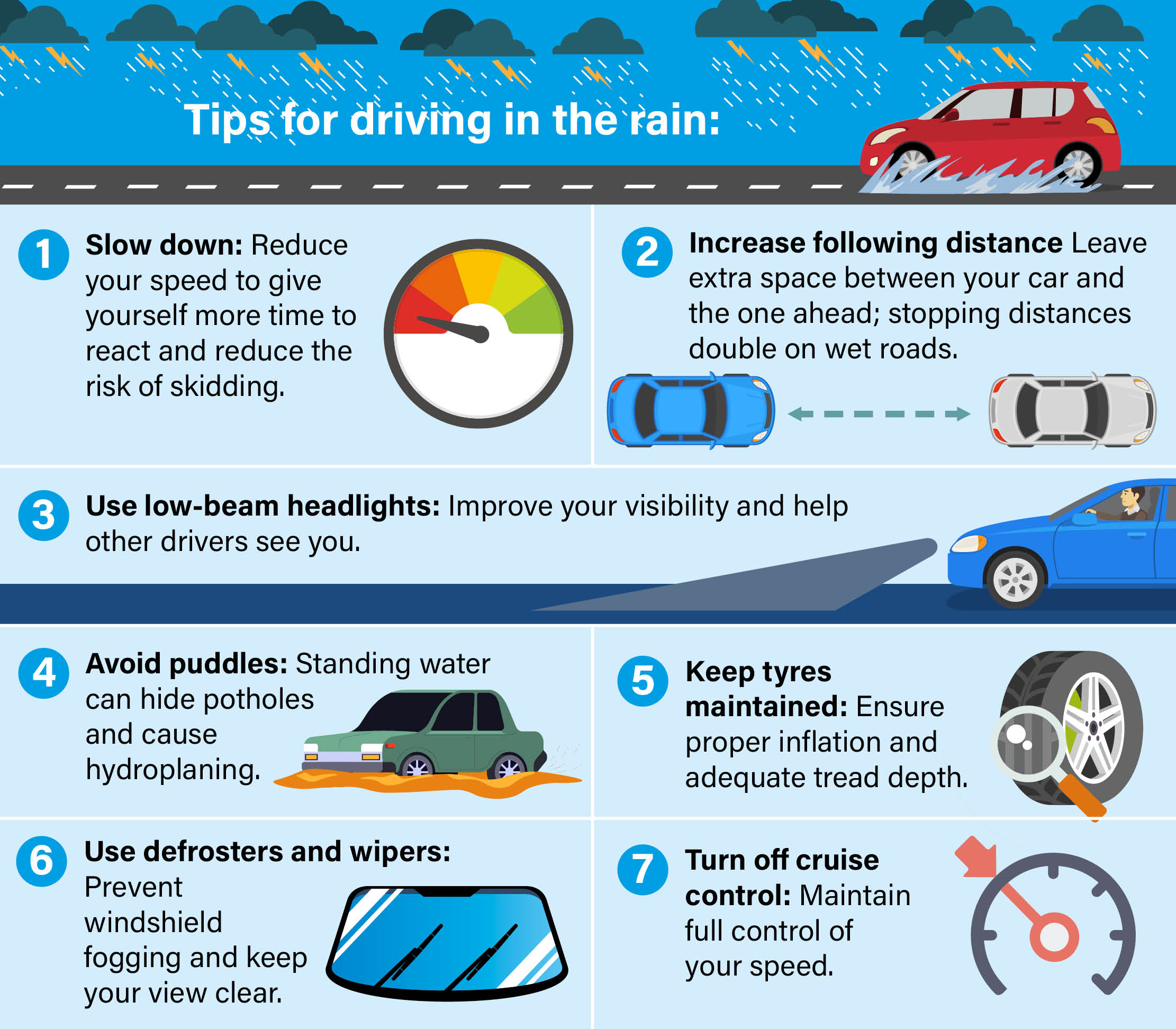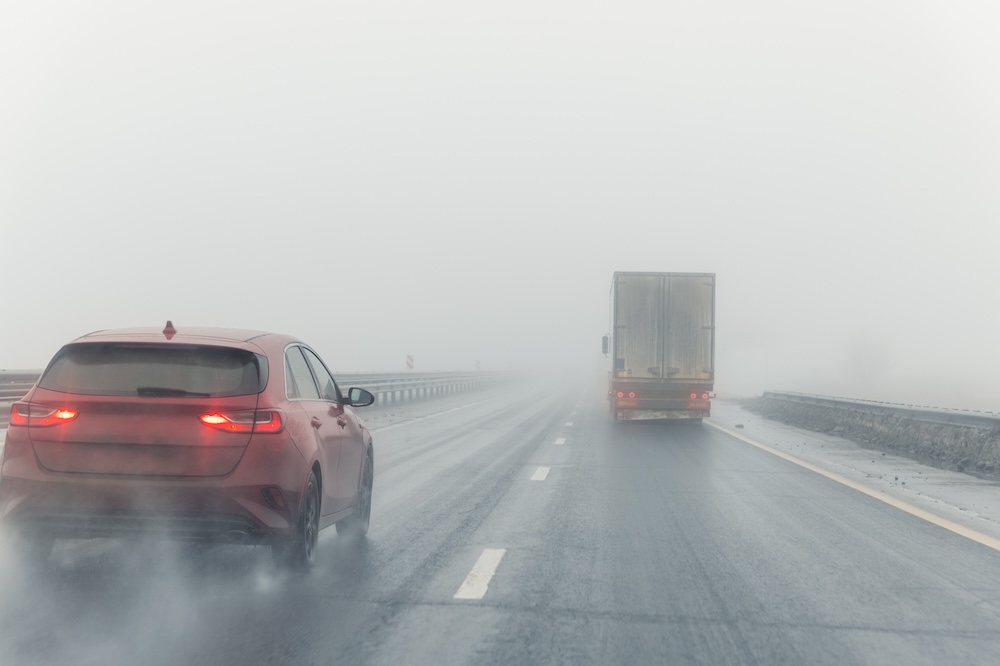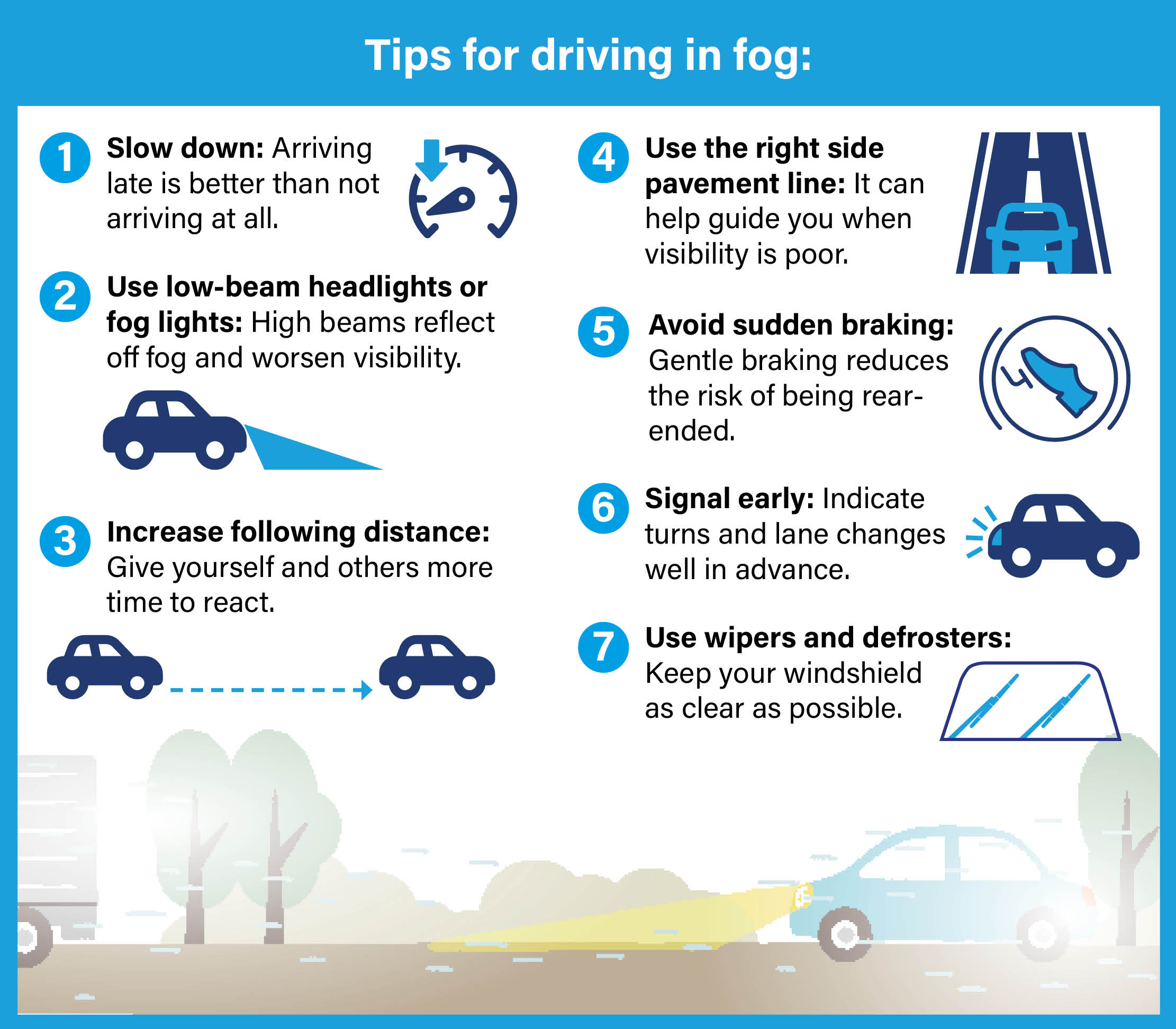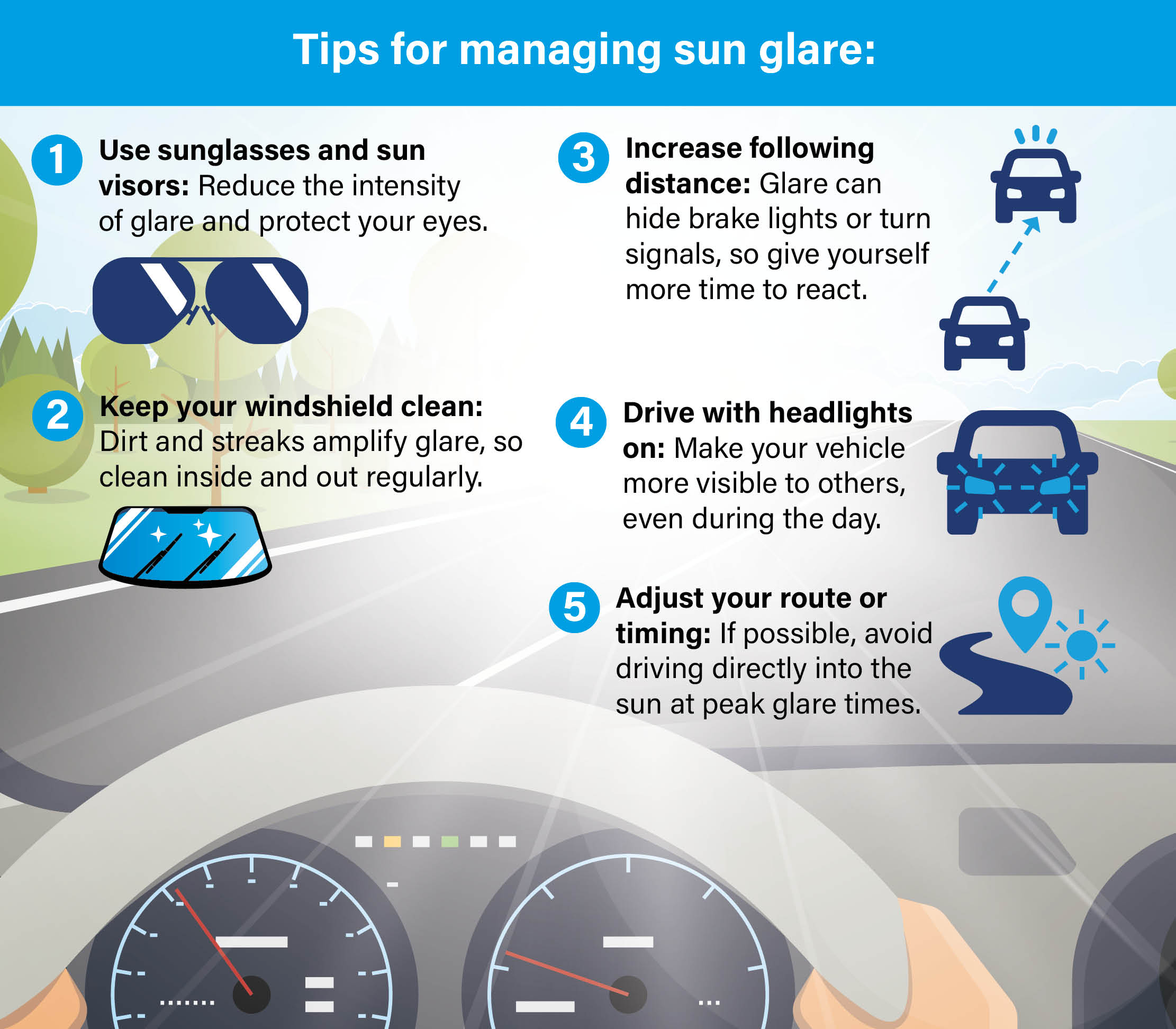From torrential rain to blinding sunshine, the weather shapes every journey on the road. Discover how different conditions affect your driving, and learn expert tips to stay safe, whether you’re navigating through fog, dodging puddles, or battling glare.

Every driver knows the feeling: a sudden downpour, a stretch of dense fog, or the blinding glare of a low sun. Weather can turn a routine drive into a test of skill and nerve. In Singapore, where significant rainfall is a regular occurrence, driving in wet conditions is unavoidable. Research shows that higher rainfall is a major contributing factor to increasing road traffic accidents in Singapore.
Although exact figures for Singapore vary, the impact of weather on road safety here is notable, aligning with global findings that adverse weather conditions contribute to approximately 12–21% of all vehicle crashes, with wet pavement and rain accounting for the majority of such incidents. In Singapore, frequent and often intense rainfall makes driving in wet conditions virtually unavoidable, and local research confirms that injury-causing traffic accidents tend to increase on rainy days, underscoring rain as a major factor in road safety challenges
Understanding how weather affects driving and how to adapt can make the difference between a safe arrival and a roadside emergency.
Rain: Slippery roads and reduced visibility
Rain is the most common weather hazard for drivers, responsible for nearly half of all weather-related crashes. The first minutes of rainfall are especially treacherous, as water mixes with oil and debris, creating slick surfaces that reduce tire traction. Hydroplaning, a loss of contact between tires and the road, can occur at speeds as low as 56 km/h, causing drivers to lose control. Additionally, heavy rain significantly reduces visibility, making it harder to see street signs, brake lights of the cars ahead, and traffic signals. This combination of slippery roads and impaired sightlines increases the risk of collisions, demanding extra caution from drivers.

Fog: The invisible threat
Fog is statistically one of the most dangerous driving conditions, causing thousands of crashes and hundreds of deaths each year. It reduces visibility, distorts distances, and reflects headlights, making it hard to judge how far away other vehicles or obstacles are. Reaction times shrink, and the risk of multi-car pileups rises, especially on highways.
Haze: The Subtle but Serious Visibility Hazard
Haze, caused by suspended particles like smoke, pollution, or dust, can severely reduce visibility and make driving hazardous, especially in regions prone to haze events such as Southeast Asia. Unlike fog, which forms from moisture, haze tends to create a dry but murky atmosphere that can linger for days. This reduced visibility challenges drivers’ ability to see road markings, traffic signals, pedestrians, and other vehicles clearly, increasing the risk of accidents.
How haze affects driving:
- Visibility range may drop dramatically, sometimes to less than 200 meters.
- The air quality is often poor, which can affect driver alertness and respiratory comfort.
- Glare from headlights and streetlights may scatter in the haze, creating a “halo” effect that reduces clarity.
- Judging distances and speeds becomes more difficult, especially at night.
Tips for driving safely in a haze:
- Slow down, as reduced visibility means you need more time to react to hazards.
- Use low-beam headlights and avoid high beams as the light scatters in the haze, worsening visibility.
- Increase following distance and give extra space to vehicles ahead to allow for sudden stops.
- Keep the windshield clean as dirt and smudges worsen visibility in hazy conditions.
- Use the air recirculation mode because it helps prevent external pollutants from entering your car.
- Stay alert and watch for pedestrians, cyclists, and animals that may be harder to spot.
- Lastly, avoid driving if possible in severe haze, and consider delaying travel or using alternative transport.
Sunshine and Glare: The hidden dangers of a clear day
While rain and fog are obvious hazards, bright sunshine can be just as dangerous. Glare from a low sun, especially at sunrise or sunset, can temporarily blind drivers, making it hard to see traffic signals, pedestrians, or other vehicles. Reflections from wet roads or snow can intensify the effect.

Other Weather Hazards: Wind, snow, and ice
While less common in many regions, snow and ice present extreme challenges for drivers. Traction drops sharply on icy surfaces, and stopping distances can quadruple compared to dry roads. High winds can push vehicles—especially trucks and high-sided vehicles—off course or into other lanes, creating extra risks.
Tips for Driving Safely in Snow and Ice:
- Slow Down and Drive Smoothly: Reduce speed well below posted limits to maintain control and avoid sudden acceleration, braking, or sharp turns.
- Increase Following Distance: Leave at least double or triple the usual space compared to normal conditions to allow for longer stopping distances.
- Use Winter Tyres: Equip your vehicle with snow or all-season tires rated for winter driving to improve traction.
- Brake Gently: Use controlled, gentle braking to avoid skids; if your car has ABS, apply steady pressure but avoid pumping the brakes.
- Accelerate Gradually: Build speed slowly to maintain traction and reduce slipping.
- Know How to Correct Skids: If you start to skid, steer gently in the direction you want to go and avoid overcorrecting.
- Keep Headlights On: Improve visibility to others in snowy, foggy, or stormy conditions.
- Clear Snow and Ice from Your Vehicle: Remove all snow and ice from windows, mirrors, lights, and roof for maximum visibility and safety.
- Prepare Emergency Supplies: Carry essentials like a shovel, blankets, food, water, and a fully charged phone in case you get stranded.
Tips for Driving in High Winds:
- Keep Both Hands on the Wheel: Strong gusts require extra control to maintain your lane.
- Reduce Speed: Lower your speed to help maintain stability, especially when crossing bridges or open areas.
- Watch for Large Vehicles: Stay alert as trucks, buses, and trailers are more affected by wind and may sway or drift.
- Avoid Passing Large Vehicles: Wind turbulence from large vehicles can be unpredictable.
- Be Ready for Sudden Gusts: Pay attention to wind advisories and be prepared to react quickly.
General tips for all weather conditions:
- Plan: Check forecasts and road conditions before setting out.
- Allow extra time: Don’t rush; give yourself more time to drive cautiously.
- Stay alert: Bad weather demands your full attention; avoid distractions.
- Know when to stay put: If conditions are too dangerous, the safest choice is to wait it out.



